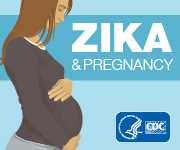Centers for Birth Defects Research and Prevention (CBDRP)
The Centers for Birth Defects Research and Prevention (CBDRP) are several research centers across the nation funded by CDC to understand the causes of birth defects. These Centers have been conducting one of the largest studies of birth defects ever undertaken in the United States, called the National Birth Defects Prevention Study (NBDPS). The CBDRP will build upon the success of NBDPS and further examine promising findings with the Birth Defects Study to Evaluate Pregnancy exposureS (BD-STEPS). Read below for more information on the CBDRP.
The CBDRP

The CBDRP are a collaborative group of ten study Centers funded by CDC to increase what we know about birth defects through tracking, research, and partnerships. In 1996, Congress directed CDC to establish the CBDRP. This was formalized with the passage of the Birth Defects Prevention Act of 1998 (Public Law 105-168). This act authorized CDC to do the following:
- Collect, analyze, and make available data on birth defects
- Operate regional centers that will conduct research for the prevention of birth defects
- Provide the public with information about preventing birth defects
Over the years, Centers have been established in ten states: Arkansas, California, Georgia, Iowa, Massachusetts, New Jersey, New York, North Carolina, Texas, and Utah. These states have existing birth defects programs with nationally recognized expertise in birth defects tracking and research. CDC coordinates the CBDRP and participates as the Georgia study site. The CBDRP collaborate on two large studies: the National Birth Defects Prevention Study (NBDPS), which includes births from 1997-2011, and the Birth Defects Study To Evaluate Pregnancy exposureS (BD-STEPS), which began in 2014. These studies will help to identify risks for and potential causes of birth defects.
Through the NBDPS, the CBDRP have been building the infrastructure for birth defects research for more than a decade. The CBDRP’s next endeavor, BD-STEPS, builds on the success of the NBDPS. It presents an opportunity to further explore NBDPS findings and follow up on leads to understand more about what causes birth defects.

Importance of NBDPS

The National Birth Defects Prevention Study (NBDPS) is one of the largest U.S. studies that looks at risks and potential causes of birth defects. NBDPS studies babies born between 1997 and 2011. Mothers of more than 30,000 babies with birth defects and 10,000 babies without birth defects took part in this study, and over 150 papers have been written using data from NBDPS. Interviewing mothers of babies in the study stopped in March 2013, but researchers will continue to analyze this rich source of information on birth defects.
NBDPS has made key contributions toward understanding the risk of having a baby with a birth defect when specific medications are used just before and during pregnancy. Data from NBDPS have demonstrated that mothers who are obese have a much higher risk for having a baby with a number of different major birth defects. The study has also confirmed results from previous studies that found that women who smoke cigarettes during pregnancy have a higher risk of having a baby with a cleft lip, cleft palate, or both.
Importance of BD-STEPS

The Birth Defects Study To Evaluate Pregnancy exposureS (BD-STEPS) is the CBDRP’s next endeavor to follow-up on findings from NBDPS and to further examine what causes birth defects and how to prevent them. BD-STEPS began collecting data in 2014. Six study centers are funded for BD-STEPS: Arkansas, California, Iowa, Massachusetts, New York, and North Carolina. CDC participates as the seventh study center in Georgia.
Similar to NBDPS, BD-STEPS aims to identify factors such as specific medications or environmental exposures that may affect the risk for having a baby with a birth defect. As part of the study, interviewers will talk to mothers of babies with birth defects and mothers of babies without birth defects. Researchers will also study genetic causes of birth defects. This study collects information on babies with one or more of 17 types of major birth defects. Researchers chose these conditions to study because they can be severe, they incur high health care use or costs, they can be identified consistently across study sites, or because previous findings have warranted more in-depth research.
- Page last reviewed: June 28, 2017
- Page last updated: June 28, 2017
- Content source:



 ShareCompartir
ShareCompartir